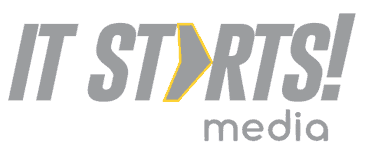Table of Contents
a. Improved Visual Quality
b. Enhanced Viewer Experience
c. Brand Professionalism
d. Versatility and Creativity
– Three-Point Lighting Setup
1. Key Light
2. Fill Light
3. Backlight
– Controlling Shadows and Highlights
– Creating Depth and Dimension
– Key Light
1. LED Panels
2. Softboxes
3. Ring Lights
– Fill Light
– Backlight (Hair Light/Rim Light)
– Light Stands and Modifiers
– Accessories
– Step 1: Identify Your Primary Subject Area
– Step 2: Position Your Key Light
– Step 3: Set Up Your Fill Light
– Step 4: Add a Backlight or Hair Light
– Step 5: Adjust Light Intensity and Color Temperature
– Step 6: Use Light Modifiers (Optional)
– Step 7: Test and Refine
– Lighting for Solo Podcasters
– Lighting for Multiple Hosts or Guests
– Lighting for Different Backgrounds or Sets
1. Solid Color Backdrops
2. Green Screens
3. Elaborate Sets
– Avoiding Common Lighting Mistakes
– Using Natural Light Effectively
– Experimenting with Creative Lighting Styles
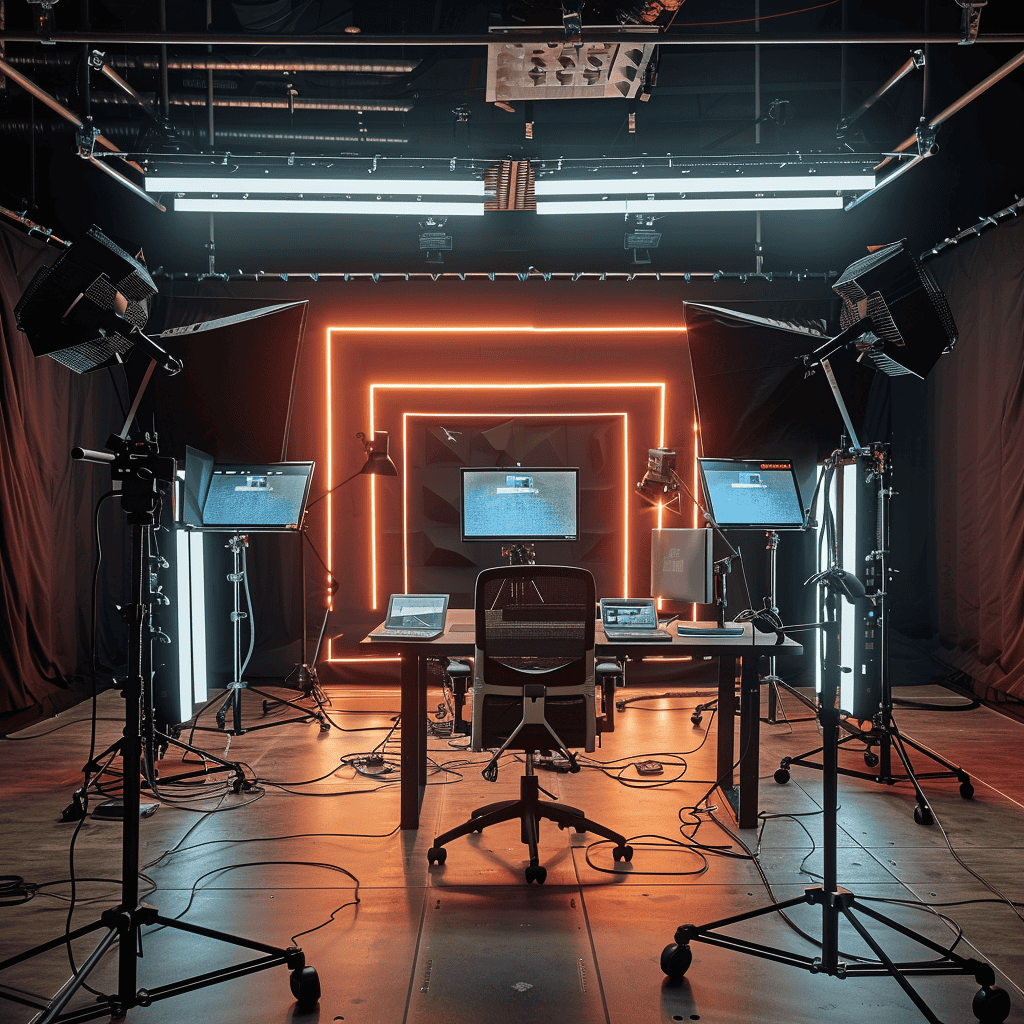
Introduction
In the world of digital content creation, video has become a powerful medium for engaging audiences, whether it’s through podcasts, corporate videos, or any other visual storytelling format. However, one crucial element that often gets overlooked is lighting. Proper lighting can make or break the overall quality and impact of your video production, especially when it comes to podcast video production and corporate video production.
Effective lighting not only enhances the visual appeal of your content but also plays a vital role in setting the mood, creating depth, and ensuring that your subjects appear their best on camera. With the right podcast video production lighting techniques, you can elevate your podcast episodes, making them more captivating and professional-looking. Similarly, corporate video production lighting can help you convey your brand’s message with clarity and impact, leaving a lasting impression on your viewers.
In this ultimate guide to lighting for podcast video production and corporate video production, we’ll dive deep into the essential principles, equipment, and techniques you need to master. From understanding the three-point lighting setup to selecting the right key lights, fill lights, and backlights, we’ll cover everything you need to know to create stunning, well-lit videos that captivate your audience.
Whether you’re a seasoned podcaster, a corporate video producer, or just starting out in the world of video creation, this comprehensive guide will equip you with the knowledge and skills to take your lighting game to the next level. So, get ready to illuminate your content and stand out in the crowded digital landscape with professional-grade podcast video production lighting and corporate video production lighting.
1. Why Proper Lighting Matters for Podcast Videos
In the realm of podcast video production, lighting is often an underrated aspect that can make or break the overall viewing experience. While audio quality is undoubtedly crucial, the visual appeal of your podcast videos plays a significant role in capturing and retaining your audience’s attention.
Proper lighting not only enhances the clarity and sharpness of your visuals but also adds depth, dimension, and mood to your podcast set. Well-lit scenes create a sense of professionalism and production value, elevating your content above the sea of amateur-looking videos flooding the internet.
Here are some key reasons why investing in good podcast video production lighting is essential:
a. Improved Visual Quality: Adequate lighting ensures that your subject(s) and surroundings are well-illuminated, free from harsh shadows, and captured in vivid detail. This results in a polished, high-quality visual presentation that keeps viewers engaged and invested.
b. Enhanced Viewer Experience: Proper lighting helps create a pleasant and visually appealing atmosphere, reducing eye strain and making it easier for viewers to focus on the content without distractions. A well-lit environment also conveys a sense of warmth and intimacy, fostering a stronger connection between the hosts and the audience.
c. Brand Professionalism: In today’s competitive digital landscape, a professional-looking podcast video can significantly impact how your audience perceives your brand. Effective lighting demonstrates attention to detail and a commitment to quality, setting your podcast apart and positioning you as an authority in your niche.
d. Versatility and Creativity: Mastering the art of podcast video production lighting opens up a world of creative possibilities. By controlling the intensity, direction, and color of your lights, you can experiment with different moods, styles, and visual narratives, adding depth and interest to your content.
Investing time and resources into proper lighting for your podcast videos is an investment in your overall production quality and viewer satisfaction. With the right lighting techniques, you can elevate your content, captivate your audience, and leave a lasting impression that keeps them coming back for more.
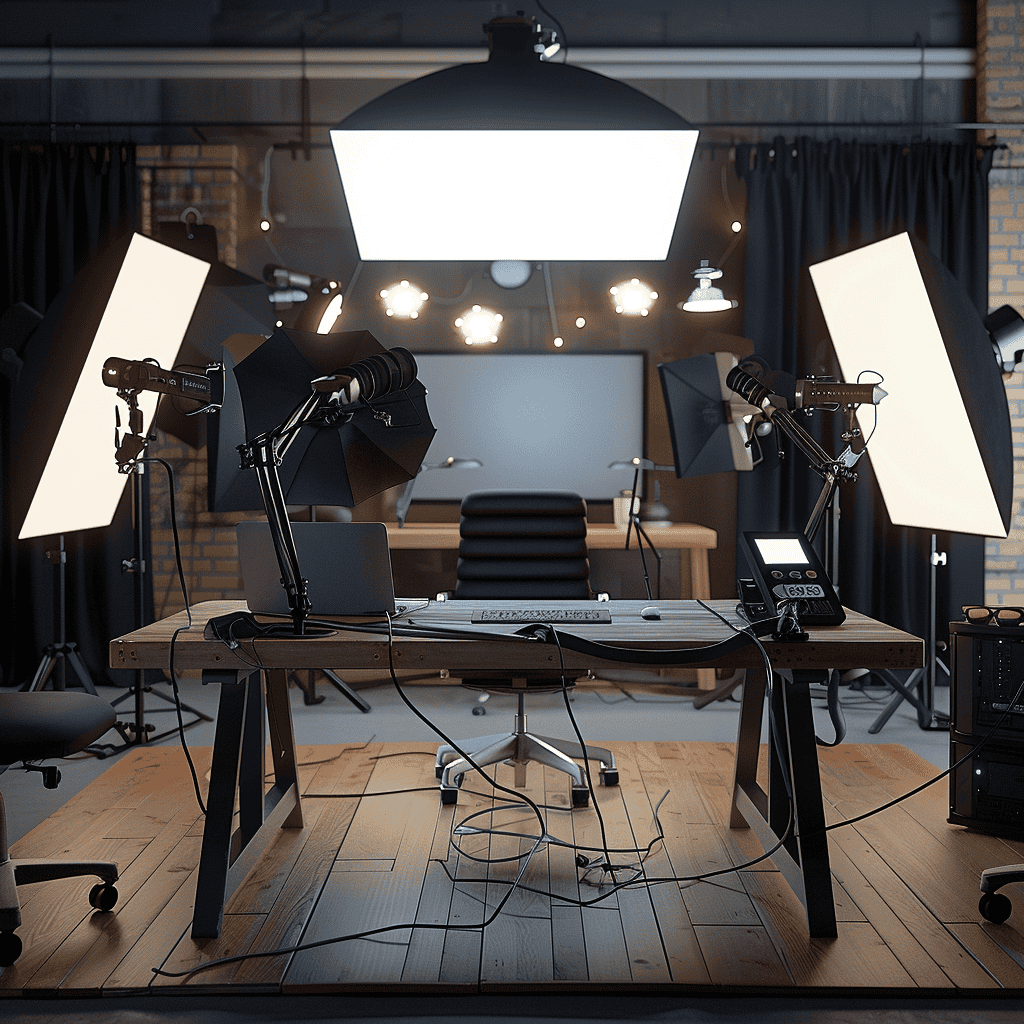
2. Key Principles of Lighting for Podcast Videos
To achieve professional-looking and visually appealing podcast videos, it’s essential to understand and apply the fundamental principles of lighting. These principles form the foundation for creating a well-lit environment that enhances the overall quality and impact of your content.
Three-Point Lighting Setup:
The three-point lighting setup is a staple in the world of video production, including podcast video production. This setup involves strategically positioning three main light sources to sculpt and shape the subject’s features while creating depth and dimension.
1. Key Light: Also known as the main light, the key light is the primary source of illumination, typically positioned at a 30-45 degree angle to the subject’s face. This light creates the main highlights and shadows, defining the subject’s features and adding depth.
2. Fill Light: The fill light is a secondary light source placed opposite the key light, helping to soften harsh shadows and reduce contrast. It “fills in” the darker areas, creating a more balanced and natural-looking illumination.
3. Backlight: The backlight (or hair light) is positioned behind the subject, separating them from the background and adding a subtle rim of light around their outline. This light adds depth, dimension, and a sense of separation from the surroundings.
Controlling Shadows and Highlights:
Effective lighting for podcast videos is all about controlling the interplay of shadows and highlights. By strategically positioning your lights and adjusting their intensity, you can create depth, mood, and visual interest. Soft, diffused lighting minimizes harsh shadows, while strategically placed accent lights can add dimension and drama.
Creating Depth and Dimension:
Proper lighting techniques can transform a flat, two-dimensional scene into a visually captivating three-dimensional environment. By layering different light sources and using contrasting intensities, you can create a sense of depth and dimension, making your subjects and surroundings appear more lifelike and engaging.
Mastering these key principles of lighting will not only elevate the visual quality of your podcast videos but also provide you with a solid foundation for experimenting with different lighting styles and techniques, allowing you to craft a unique and compelling visual aesthetic for your content.

3. Essential Lighting Equipment for Podcast Videos
To achieve professional-grade lighting for your podcast videos, having the right equipment is crucial. While you don’t need to break the bank, investing in quality lighting gear will pay dividends in terms of production value and overall visual appeal.
Key Light:
The key light is the primary light source that illuminates your subject and sets the foundation for your lighting setup. There are several options to consider:
1. LED Panels: LED panels are a popular choice for their versatility, energy efficiency, and adjustable color temperature and intensity. They often come in various sizes and can be easily mounted on light stands.
GVM RGB LED Panel Video Light, Photography Lighting with APP Control
2. Softboxes: Softboxes are light modifiers that create a soft, diffused light by bouncing the light source through a fabric box. They’re ideal for creating a flattering, natural-looking light on your subject.
Nanlite FS-300B Bi-Color LED Monolight
3. Ring Lights: Ring lights have gained popularity in recent years, especially for solo podcasters or vloggers. They provide a flattering, even illumination around the subject’s face, reducing harsh shadows.
Fill Light:
The fill light is a secondary light source that helps to soften shadows and reduce contrast. While a dedicated fill light can be used, reflectors are often a cost-effective solution. Reflectors bounce and diffuse light from your key light, filling in shadows and creating a more balanced look.
Backlight (Hair Light/Rim Light):
The backlight separates your subject from the background, adding depth and dimension. Options include:
1. Hair Lights: Hair lights are positioned behind and above your subject, creating a subtle rim of light around their outline and hair.
Nanlite PavoTube II 15X RGB LED Pixel Tube Light (2′, 4-Light Kit)
2. Rim Lights: Rim lights are placed behind your subject, creating a more dramatic edge light that separates them from the background.
Light Stands and Modifiers:
In addition to the lights themselves, you’ll need sturdy light stands to position your lights at the desired angles and heights. Light modifiers such as softboxes, umbrellas, and barn doors can help you shape and control the quality of light, creating the desired effect.
Accessories:
Don’t forget about accessories like sandbags or counterweights to secure your light stands, and gels or filters to adjust the color temperature or add creative effects to your lighting.
By investing in quality lighting equipment and understanding how to use each piece effectively, you’ll be well-equipped to create stunning, professional-looking podcast videos that captivate your audience.
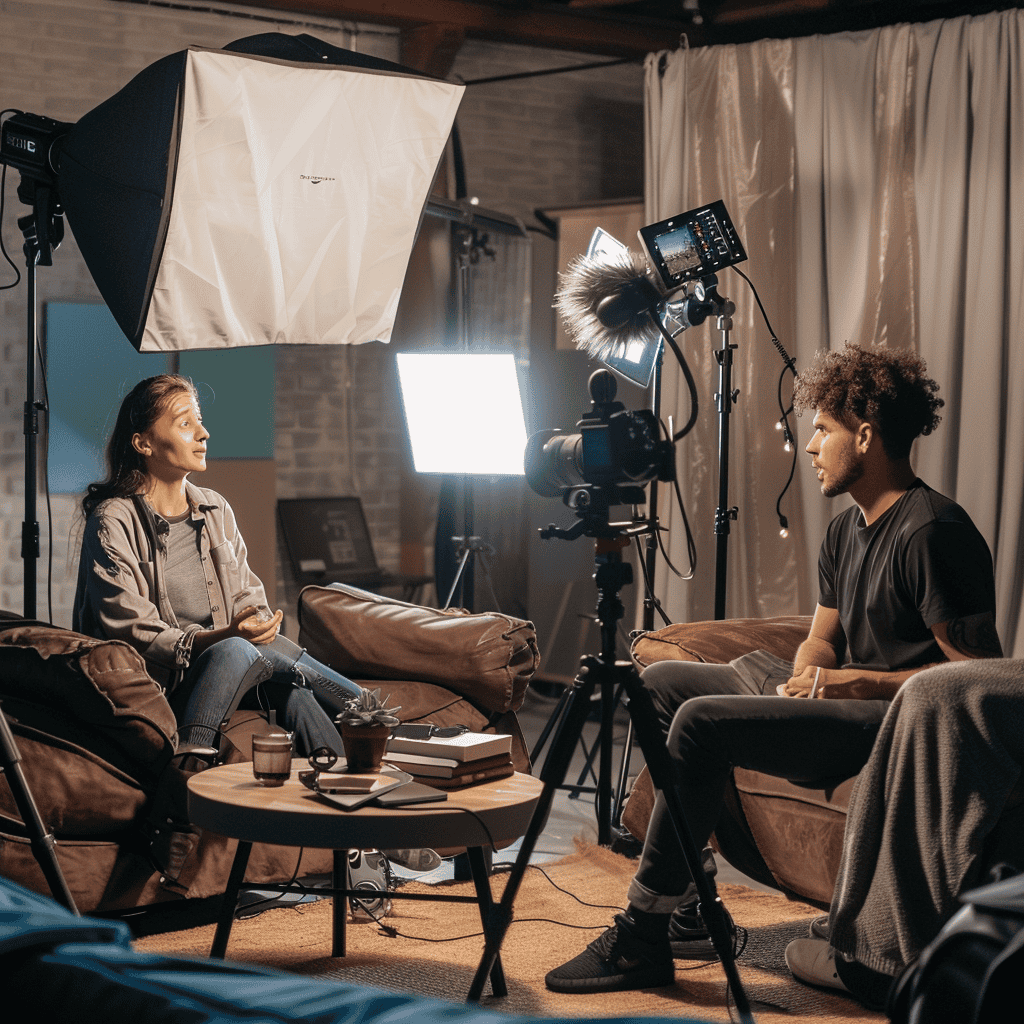
4. Setting Up Your Podcast Video Lighting
Now that you understand the essential lighting equipment, it’s time to dive into the actual setup process. Proper positioning and configuration of your lights are critical to achieving the desired effect and creating a visually appealing podcast set.
Step 1: Identify Your Primary Subject Area
Before setting up your lights, determine the primary area where your subjects will be seated or standing during the podcast recording. This will serve as the focal point for your lighting setup.
Step 2: Position Your Key Light
Place your key light at a 30-45 degree angle to the side of your primary subject area, positioning it slightly above eye level. This angle will create flattering shadows and highlights, adding depth and dimension to your subjects’ faces.
Step 3: Set Up Your Fill Light
Position your fill light on the opposite side of the key light, typically at a slightly lower angle. The fill light should be less intense than the key light, helping to soften harsh shadows and reduce contrast.
Step 4: Add a Backlight or Hair Light
To separate your subjects from the background and create a sense of depth, set up a backlight or hair light behind them. Position the light slightly above head level, angling it downward to create a subtle rim of light around their outlines and hair.
Step 5: Adjust Light Intensity and Color Temperature
Once your lights are in position, it’s time to fine-tune their intensity and color temperature. Start with your key light, adjusting its brightness to achieve the desired level of illumination on your subjects. Then, adjust the fill light to balance out the shadows and highlights, and finally, tweak the backlight to create the desired separation and depth.
Most modern lighting equipment allows you to adjust the color temperature, typically ranging from warm (yellowish) to cool (bluish) tones. Choose a color temperature that complements your subjects’ skin tones and the overall mood you’re trying to create.
Step 6: Use Light Modifiers (Optional)
If you’re using softboxes, umbrellas, or other light modifiers, position them appropriately to shape and control the quality of light. Softboxes, for example, can create a soft, diffused light perfect for flattering portraits, while umbrellas can provide a broader, more even illumination.
Step 7: Test and Refine
With your initial lighting setup complete, it’s time to test and refine. Have your subjects take their positions and observe the lighting from different angles. Adjust the positions, intensities, and angles of your lights as needed until you achieve the desired look.
Remember, lighting setup is an iterative process, and experimentation is key to finding the perfect balance for your podcast video production. Don’t be afraid to try different configurations and make adjustments until you’re satisfied with the results.

5. Lighting Techniques for Different Podcast Setups
While the fundamental principles of lighting remain the same, the specific techniques and configurations may vary depending on your podcast setup. Whether you’re a solo podcaster, have multiple hosts or guests, or utilize different backgrounds or sets, adapting your lighting approach is crucial to achieving the best possible results.
Lighting for Solo Podcasters:
As a solo podcaster, your lighting setup can be relatively straightforward, with the primary focus on evenly illuminating your face and creating a flattering, professional look.
1. Key Light: Position your key light at a 30-45 degree angle to one side of your face, slightly above eye level, to create depth and highlight your features.
2. Fill Light: Use a fill light on the opposite side to soften shadows and reduce contrast, creating a balanced look.
3. Backlight or Hair Light: Add a backlight or hair light behind you to separate you from the background and add dimension.

Three point lighting diagram – Key light, Fill light, Back light
Lighting for Multiple Hosts or Guests:
When you have multiple hosts or guests on your podcast, the lighting setup becomes more complex, as you need to ensure even illumination for everyone.
1. Key Lights: Use multiple key lights, one for each subject, positioned at the appropriate angles to flatter each person’s features.
2. Fill Lights: Incorporate fill lights to balance the shadows and highlights for each individual.
3. Backlights: Consider using multiple backlights or hair lights to separate each subject from the background and add depth.
4. Consistent Lighting Temperatures: Ensure that all your lights are set to the same color temperature to maintain a cohesive look across the set.
Lighting for Different Backgrounds or Sets:
The background or set design of your podcast can significantly impact your lighting approach. Whether you’re using a solid-colored backdrop, a green screen, or a more elaborate set, adapting your lighting techniques is crucial.
1. Solid Color Backdrops: For solid color backdrops, focus on evenly illuminating the backdrop to create a clean, consistent look. Use a combination of key, fill, and backlights to properly light your subjects.
2. Green Screens: When using a green screen, ensure even, flat illumination across the entire screen to facilitate effective chroma-keying. Use diffused lighting to minimize shadows and hotspots.
3. Elaborate Sets: For more complex sets, you may need to incorporate additional lights to highlight specific areas or elements. Use accent lights, practicals (in-set lights), and creative lighting patterns to enhance the set’s visual appeal.
Regardless of your podcast setup, the key is to experiment with different lighting configurations and make adjustments until you achieve the desired look and feel. Don’t be afraid to try new techniques and embrace creativity to craft a unique and visually stunning podcast video production.
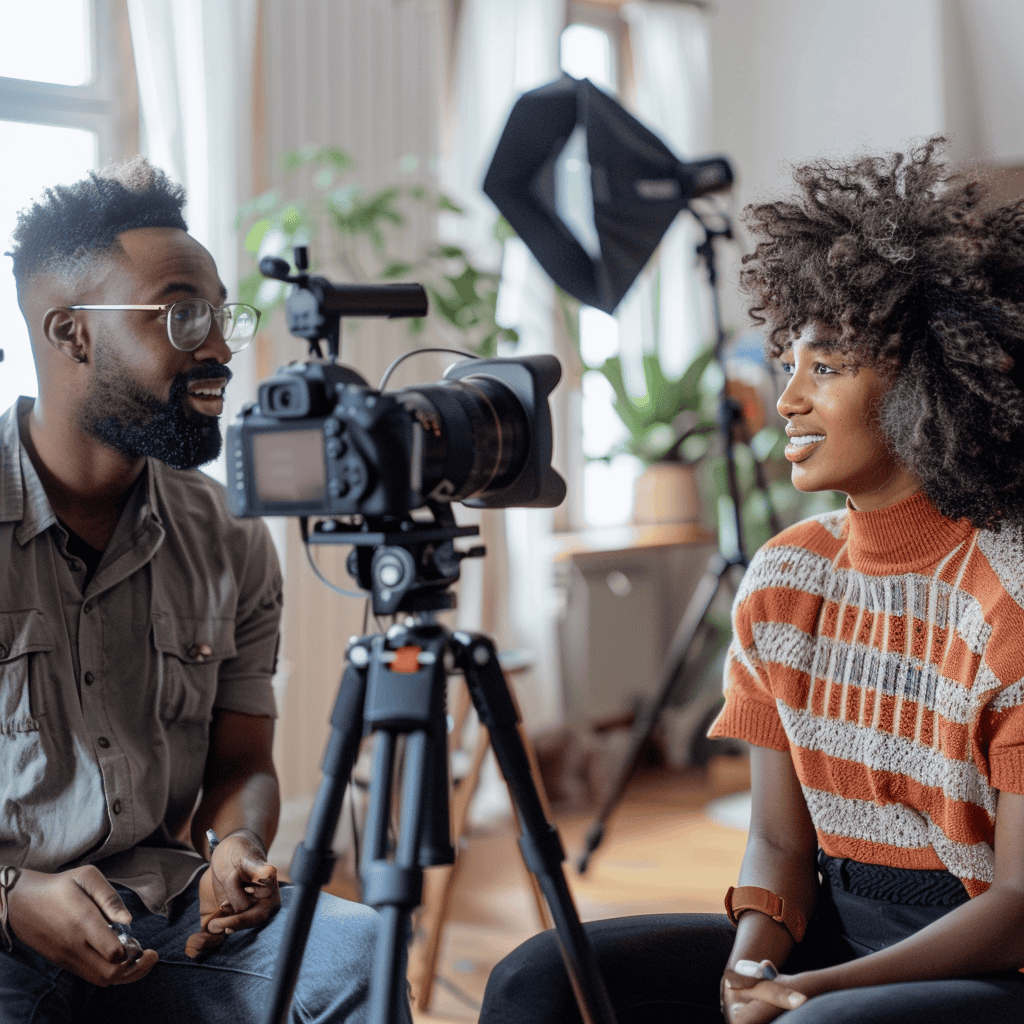
6. Tips and Tricks for Better Podcast Video Lighting
While following the fundamental principles and techniques is essential, there are several tips and tricks that can take your podcast video lighting to the next level. These additional insights will help you avoid common pitfalls, make the most of available resources, and unleash your creativity.
Avoiding Common Lighting Mistakes:
1. Uneven Illumination: Ensure that your subjects are evenly lit, without any harsh shadows or hotspots on their faces or bodies.
2. Harsh Shadows: Use fill lights and reflectors to soften harsh shadows, creating a more natural and flattering look.
3. Unflattering Angles: Position your lights at the appropriate angles to flatter your subjects’ features and avoid creating unflattering shadows or highlights.
Using Natural Light Effectively:
While artificial lighting is often necessary for consistent results, incorporating natural light can add depth and warmth to your podcast video production.
1. Window Light: Position your subjects near a large window, using the natural light as your key or fill light.
2. Reflectors: Use reflectors to bounce and diffuse natural light, filling in shadows and creating a more balanced look.
3. Diffusion: Use sheer curtains or diffusion panels to soften harsh sunlight and create a more even, flattering illumination.
Experimenting with Creative Lighting Styles:
While a traditional three-point lighting setup is a solid foundation, don’t be afraid to experiment with creative lighting styles to add visual interest and mood to your podcast videos.
1. Dramatic Lighting: Use strong directional lighting and deep shadows to create a moody, cinematic look.
2. Colored Lighting: Incorporate colored gels or filters to add vibrant hues or enhance the overall mood of your set.
3. Practical Lighting: Utilize in-set lights, such as lamps or candles, to create a warm, inviting atmosphere and add depth to your scene.
Remember, lighting is an art form, and mastering it takes practice and experimentation. Don’t be afraid to try new techniques, make adjustments, and embrace your creativity. By following these tips and tricks, you’ll be well on your way to creating visually stunning and engaging podcast videos that stand out from the crowd.

Conclusion
In the world of podcast video production, lighting is a critical element that can elevate your content from ordinary to extraordinary. By mastering the principles of three-point lighting, understanding the essential equipment, and implementing effective lighting techniques, you can create visually captivating and professional-looking videos that engage your audience and leave a lasting impression.
Throughout this comprehensive guide, we’ve explored the importance of proper lighting, the key principles that govern it, and the essential equipment required to achieve stunning results. We’ve also delved into step-by-step instructions for setting up your lighting, tailored techniques for different podcast setups, and valuable tips and tricks to take your lighting game to new heights.
Remember, lighting is an art form that requires experimentation, creativity, and a willingness to learn and adapt. Don’t be afraid to step out of your comfort zone and try new techniques, whether it’s experimenting with dramatic lighting styles, incorporating natural light, or using creative colored gels to set the mood.
Ultimately, the goal is to create a visually appealing and immersive experience for your viewers, one that not only captures their attention but also leaves a lasting impression. With the right lighting setup and techniques, you can elevate your podcast videos, making them stand out in a crowded digital landscape and showcasing your commitment to quality and professionalism.
So, embrace the power of lighting, and let it be the driving force behind your podcast video production. Experiment, learn, and never stop refining your craft. With dedication and passion, you’ll be well on your way to creating podcast videos that captivate and inspire your audience, solidifying your position as a leader in your niche.
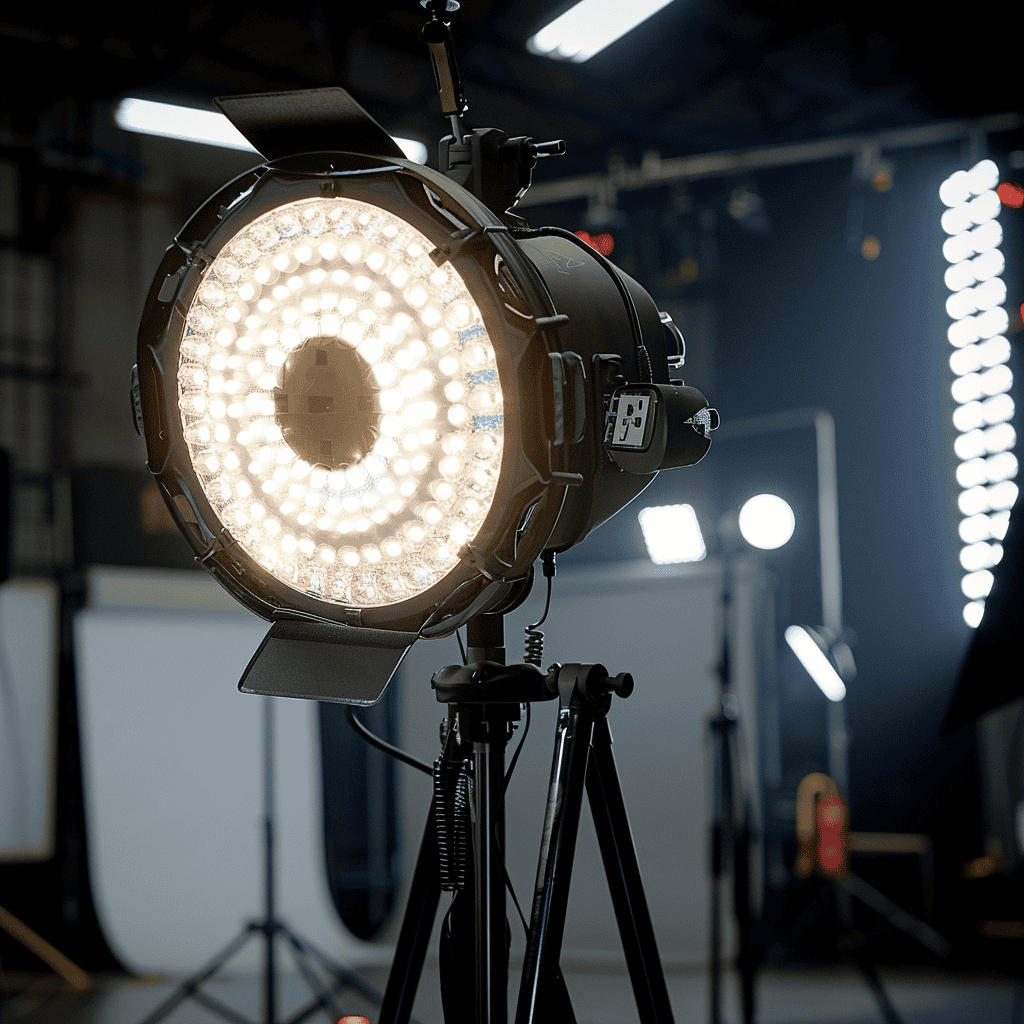
If you’re seeking professional assistance to take your podcast video production to the next level, look no further than “IT STARTS! media.” Our experienced team of corporate video production experts is dedicated to helping you create visually stunning and engaging podcast content. From lighting consultations and equipment rentals to full-service video production, we’ve got you covered every step of the way.
Our team understands the nuances of podcast video production, ensuring that your lighting setup is tailored to your specific needs, whether you’re a solo podcaster or have multiple hosts and guests. We’ll work closely with you to understand your vision and create a lighting plan that enhances your brand, captivates your audience, and elevates your content above the competition.
Don’t hesitate to reach out to “IT STARTS! media” for all your podcast video production needs. We’re passionate about delivering exceptional quality and will be your trusted partner in bringing your podcast to life with stunning visuals and professional-grade lighting. Contact us today to start your journey toward creating visually compelling podcast videos that leave a lasting impression.
By including this paragraph, you’re directly inviting readers to consider your professional services at “IT STARTS! media” for their podcast video production needs, positioning your team as experts in the field and emphasizing the value you can provide in terms of lighting expertise, equipment, and full-service video production.
Join our newsletter
Get video tips and tricks right in your inbox!
